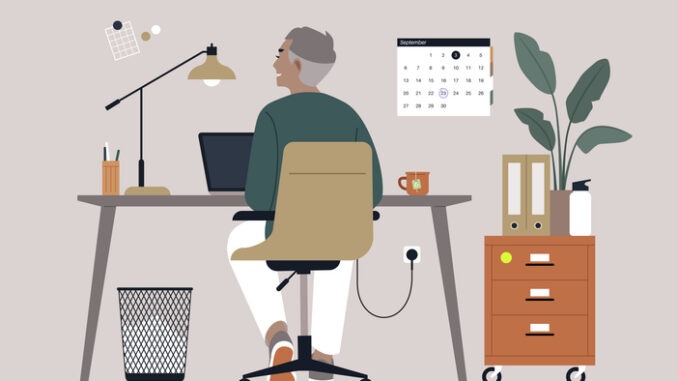
In today’s evolving workplace, the traditional idea of being tethered to a designated desk is becoming obsolete. It’s time to unplug from the wall and explore how dealers can support customers in creating versatile spaces that enhance employee choice
Remember the days when everyone had ‘their’ desk at work? When team members would return to the same spot daily and be surprised if someone else was sitting in their space? While certain roles may still require a specific workstation, today’s workplaces are increasingly embracing shared or flexible environments. Therefore, it is imperative that dealers help customers to build workspaces that give people the flexibility and choice to relocate around the building depending on the requirements of the task at hand.
The positive power of choice can have a highly beneficial impact on productivity. When employees can choose different spaces for different tasks, they can work in environments that best suit their needs, leading to higher output. So, how can dealers assist customers in achieving this flexibility in their workplace designs and layouts?
A simple and cost-effective first step is to identify spaces that are already in occasional use and convert them into alternative workstations. For instance, introducing touchdown spaces can be an efficient solution. This could be accomplished by installing fold-down desks in meeting rooms, which can be easily stored away when the room is needed for training sessions or meetings.
Removing constraints
To give employees more freedom in choosing where they work, it’s essential to ensure strong connectivity throughout the building. Dealers can recommend adding signal boosters to improve Wi-Fi coverage in areas with weak signals. This can be further supported by providing portable ICT assets such as tablets or touchpads. By offering a variety of equipment for different tasks, organisations enable staff to move freely around the building with their devices, rather than being confined to areas with power outlets.
Designated zones
Integrating ‘quiet’ spaces into workplace design is highly recommended. For team members working on complex projects, a noisy, distracting environment is far from ideal. Dealers can suggest creating ‘pod’ areas where phone use and audio equipment are prohibited. These spaces could feature quiet seating with natural light, designed to minimise distractions and enhance focus. To further reduce noise, soundproof panels, soft furnishings, and carpeting or rugs can be introduced to absorb sound and create a more conducive environment for concentration.
When considering workspace flexibility, it’s easy to assume the choice is simply between remote work and being at your desk. However, by empowering employees to choose their work environment within the office, organisations can demonstrate their commitment to making the power of choice a priority both in the office and at home.


Be the first to comment